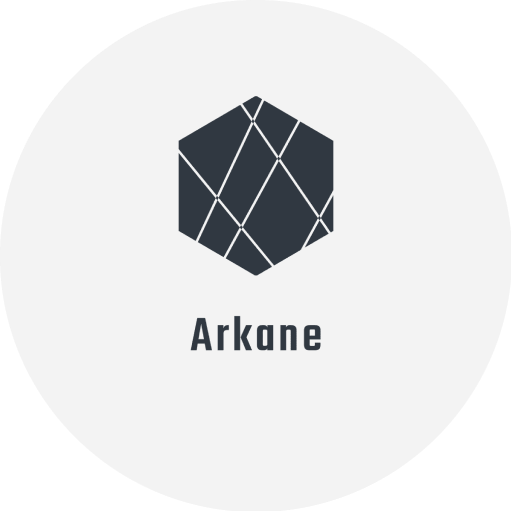
GPU Rental for Cryptocurrency Mining

Introduction
In the dynamic world of cryptocurrency mining, a significant paradigm shift is occurring. We are witnessing the dawn of an era where GPU (Graphics Processing Unit) rentals are emerging as a game-changing solution for miners. This development is not just a fleeting trend but a strategic response to the evolving challenges and opportunities in the crypto-mining sector.
The landscape of cryptocurrency mining has historically been dominated by individual miners using personal hardware. This approach, while effective in the early days of Bitcoin and other cryptocurrencies, has faced increasing challenges. The complexity of mining algorithms has escalated, requiring more computational power and efficiency. This increased demand for power has led to higher electricity consumption, making mining less profitable, especially in regions with high energy costs.
Enter GPU rentals—a solution that aligns with the needs of modern miners. GPUs are highly efficient at performing the parallel calculations essential for mining algorithms. Unlike CPUs (Central Processing Units), which are designed for general-purpose computing, GPUs excel in the specific, repetitive tasks that define cryptocurrency mining. This efficiency is not just about raw power; it’s about the type of power. GPUs are optimized for matrix operations, a common requirement in mining algorithms.
The move towards renting GPUs instead of purchasing or using personal hardware is driven by several factors. First, the initial investment required for high-end GPUs is substantial. By opting for rental, miners can access state-of-the-art technology without the upfront capital expenditure. This approach also mitigates the risk of obsolescence, a significant concern in an industry where hardware can quickly become outdated due to the rapid pace of technological advancement.
Furthermore, GPU rentals offer flexibility. Miners can scale their operations up or down based on current market conditions, something that’s challenging to achieve with owned hardware. This scalability is crucial in a market as volatile as cryptocurrency, where mining profitability can fluctuate dramatically.
In addition, the maintenance and energy efficiency of GPUs make them a more sustainable and cost-effective choice for miners. They require less maintenance compared to CPUs, and their energy-saving technology results in lower electricity consumption. This aspect is critical in an industry increasingly scrutinized for its environmental impact.
As we delve deeper into this new frontier, it’s crucial to understand how GPU rentals are redefining the landscape of cryptocurrency mining. This section sets the stage for an exploration of this evolving trend, offering insights into why GPU rentals are becoming the preferred choice for modern miners.
The Evolution of Cryptocurrency Mining: From CPUs to GPUs
Cryptocurrency mining, a process integral to the functioning of various blockchain networks, has undergone a substantial transformation over the years, particularly in the hardware used for mining. Initially, the mining of cryptocurrencies like Bitcoin relied on Central Processing Units (CPUs), the general-purpose processors found in most personal computers. However, this method soon hit a bottleneck. The complexity and computational demands of mining algorithms outpaced the capabilities of CPUs, paving the way for Graphics Processing Units (GPUs) to take center stage.
GPUs, primarily designed for rendering graphics, have a unique advantage in mining due to their architecture, which excels in handling complex mathematical problems inherent in the mining process. Unlike CPUs, GPUs are optimized for conducting multiple parallel operations, making them significantly more efficient for the specific computational tasks required in cryptocurrency mining. This efficiency is not just theoretical; the real-world implications are profound, as evidenced by the transition of Bitcoin mining from CPUs to GPUs, before eventually moving to more specialized ASIC (Application-Specific Integrated Circuit) hardware as the cryptocurrency’s value and mining difficulty increased.
Despite the rise of ASICs, many cryptocurrencies have maintained their commitment to accessibility and decentralization by developing ASIC-resistant algorithms. These efforts aim to keep mining feasible for individuals using consumer-grade hardware, primarily GPUs. Ethereum, for instance, famously adopted an ASIC-resistant approach during its early years, contributing to a boom in GPU mining. This approach was guided by the philosophy of maintaining a broad and decentralized miner base, as opposed to the concentration of mining power in the hands of a few with access to specialized ASICs.
Today, the landscape of cryptocurrency mining features a variety of algorithms, each with unique characteristics and hardware requirements. Popular algorithms like SHA-256, used by Bitcoin and Bitcoin Cash, and Scrypt, employed by Litecoin and Dogecoin, showcase the diversity in the mining ecosystem. Ethash, another well-known algorithm, was designed to be ASIC-resistant, making Ethereum Classic, which still uses Ethash, a popular choice for GPU miners.
While GPUs have ushered in a new era of efficiency and accessibility in cryptocurrency mining, it’s crucial to consider the implications of power consumption, a significant operational cost. The profitability of GPU mining is often dictated by the cost of electricity, which varies widely across different regions. As such, prospective miners must carefully assess their goals, whether it’s generating immediate income or accumulating cryptocurrencies over the long term, and plan their mining activities accordingly, taking into account both the potential rewards and the operational costs.
Comparing Traditional Mining Setups with GPU Rental
The evolution of cryptocurrency mining has led to a significant divergence in the approaches to mining operations. Traditional mining setups, often consisting of personal computers with powerful CPUs and one or more GPUs, have been the backbone of small-scale mining activities. However, these setups face limitations, particularly in scalability and efficiency for large-scale operations. This is where the concept of GPU dedicated servers and GPU server rentals comes into play, offering a new paradigm in cryptocurrency mining.
Traditional mining rigs are generally less suited for large-scale operations. They lack the optimized performance of dedicated GPU servers and struggle with power inefficiencies and maintenance challenges. On the other hand, GPU dedicated servers are purpose-built for mining. These servers can support multiple GPUs, which significantly enhances their mining capabilities. They are optimized for high-performance computing, which is essential in processing the complex algorithms involved in cryptocurrency mining.
One of the most notable advantages of GPU server rentals over traditional setups is their power efficiency. These servers are designed to be more power-efficient than standard rigs, resulting in substantial cost savings over time. Additionally, GPU dedicated servers are more straightforward to maintain and scale compared to traditional mining setups. This ease of maintenance is a significant advantage, considering the high demands of mining operations.
Another critical aspect of GPU server rentals is customization. Service providers like GPU Mart offer a range of hardware configurations, allowing miners to choose specific GPUs, memory, storage, and other components tailored to their needs. This level of customization enables miners to optimize their computing resources according to their specific workload requirements.
Cost-effectiveness is also a vital factor when considering GPU server rentals. Renting GPU servers is often more economical than purchasing and maintaining one’s hardware, especially for short-term needs or fluctuating workloads. Renting also alleviates the financial burden of hardware maintenance and upgrades, as these responsibilities fall on the rental provider.
Lastly, scalability is a crucial advantage of GPU server rentals. Providers typically offer scalable options, allowing miners to adjust computing resources as their workload requirements change. This flexibility ensures that miners only pay for what they need, when they need it, making GPU server rentals an adaptable solution for varying mining demands.
In summary, while traditional mining setups have their place in small-scale operations, GPU server rentals offer enhanced performance, power efficiency, customization, cost-effectiveness, and scalability, making them a more suitable option for modern, large-scale cryptocurrency mining endeavors.
Cost Analysis: GPU Rental vs. Traditional Hardware
When venturing into cryptocurrency mining, one crucial consideration is the cost, particularly when deciding between GPU server rental and investing in traditional mining hardware. The financial implications of these two approaches are distinct, with each presenting its own set of advantages and challenges.
Starting with the initial investment, purchasing the equipment for traditional mining can be significantly expensive. The high demand for video cards and ASIC miners has elevated the entry threshold, requiring substantial upfront capital. This investment is not just limited to the purchase but also extends to the ongoing maintenance and upgrade costs, which can be considerable over time. Moreover, the risk of equipment failure, particularly due to errors in power supply and cooling system configurations, adds an additional layer of financial uncertainty.
In contrast, GPU server rental offers a more financially accessible entry point into mining. The rental model allows for immediate participation in mining without the hefty initial investment in hardware. This approach is particularly advantageous for individuals or small-scale miners who may not have the capital for a large upfront investment. Additionally, server rental often includes free server management and tech support, reducing the burden and cost of maintenance and technical troubleshooting.
Power supply, a critical factor in mining profitability, also plays a significant role in the cost analysis. In many regions, the cost of electricity can make mining unprofitable. Renting a server circumvents this issue, as the electricity costs are generally included in the rental fee. This arrangement can lead to significant cost savings, particularly in areas with high electricity rates.
Another financial consideration is the flexibility offered by GPU server rental services. With options for customization and configuration flexibility, miners can tailor their setup to their specific needs without unnecessary overpayments. This flexibility allows for a more efficient allocation of resources and can result in cost savings over time.
Finally, the technological aspect should not be overlooked. GPU server rentals typically offer the most powerful GPUs and are hosted in data centers equipped with advanced infrastructure. These factors contribute to better hash rates and overall mining efficiency, which can translate into higher profitability. Additionally, the provision of specialized operating systems like RaveOS, designed to enhance hash rate performance, adds value to the rental service, potentially offsetting the cost difference when compared to owning hardware.
In summary, while owning traditional mining hardware offers the benefit of complete control and potential long-term savings, the high initial investment, maintenance costs, and electricity expenses can be daunting. On the other hand, GPU server rental offers a more flexible and cost-effective solution, especially for those looking to mitigate upfront costs and manage operational expenses more efficiently.
Selecting the Right GPU for Mining
Selecting the right GPU (Graphics Processing Unit) for cryptocurrency mining is a nuanced decision that significantly impacts the efficiency and profitability of mining operations. Various factors should be considered to ensure the chosen GPU aligns with the miner’s objectives and the specifics of the cryptocurrency being mined.
Hash Rate
The hash rate is a critical factor in GPU selection, indicating the computational power used during crypto mining. It is measured in hashes per second and ranges from kilohash per second (KH/s) to terahash per second (TH/s). A higher hash rate implies a greater likelihood of solving complex mathematical problems and earning rewards. The best GPUs for mining typically have hash rates measured in MH/s or GH/s. Miners need a higher hash rate to maintain profitability as the mining difficulty of cryptocurrencies increases.
Power Consumption
Power efficiency is paramount in mining due to the high energy consumption involved. Choosing a GPU that strikes a balance between high hash rate and low power consumption can increase profitability while minimizing operating costs. The power efficiency, measured in hash rate per watt, indicates how much hash rate a GPU can achieve per unit of power consumed. Energy-efficient GPUs not only reduce electricity costs but also decrease heat output, extending the GPU’s lifespan.
Price and Availability
The cost of GPUs can vary significantly, influenced by factors like cryptocurrency prices, market demand, and production constraints. When selecting a GPU, it’s important to consider if the price fits within the budget and if the GPU is readily available. Sometimes, investing in a higher-priced GPU can be justified by better hash rates and power efficiency, leading to higher long-term profitability. However, it’s crucial to ensure that a higher price corresponds with superior performance and energy efficiency.
In conclusion, when selecting a GPU for mining, miners must evaluate these factors carefully to ensure they choose a unit that balances performance, efficiency, and cost, aligning with their mining strategy and the specific requirements of the cryptocurrencies they aim to mine.
Building and Optimizing a GPU Dedicated Server
Building and optimizing a GPU dedicated server for cryptocurrency mining is a multi-faceted process that involves careful selection of hardware components, assembly, and software configuration. The goal is to create a system that maximizes mining efficiency while minimizing costs.
Components Required For Building A GPU Dedicated Server
To build a GPU dedicated server, several key components are necessary:
- CPU: The central processing unit is the server’s brain, managing all operations.
- Motherboard: It hosts the CPU, RAM, and GPU, and facilitates their communication.
- RAM: Sufficient memory is crucial for smooth processing.
- Storage: SSDs are preferred for their speed and durability.
- GPUs: The core of mining operations. Multiple high-performance GPUs are typically used.
- Power Supply Unit (PSU): A robust PSU is essential to supply adequate power to the GPUs.
- Cooling Solutions: Effective cooling systems are necessary to prevent overheating and ensure hardware longevity.
Steps For Building A GPU Dedicated Server
Once you have gathered all the components, follow these steps to build the server:
- Assemble the Components: Start by installing the CPU, motherboard, RAM, and storage into the server case.
- Install the GPUs: Place the GPUs into the PCIe slots on the motherboard and connect them to the PSU.
- Software Installation and Configuration: Install the operating system, drivers, and mining software. Optimize settings for peak performance.
Optimizing GPU Dedicated Servers for Mining
To ensure optimal performance and profitability, consider the following optimization strategies:
- Software Optimization: Use software specifically designed for GPU mining, like Ethminer or Claymore’s Dual Ethereum Miner, to fully harness the GPUs’ processing power.
- Power Usage Optimization: Mining can be power-intensive. Use software like MSI Afterburner to adjust power limits, reducing consumption without compromising performance.
- Fine-tuning GPU Settings: Overclock GPUs carefully using tools like MSI Afterburner or EVGA Precision X1 for enhanced performance, while monitoring to avoid hardware damage.
- Mining Pool Configuration: Joining a mining pool can increase reward chances. Choose a reliable pool with low fees and configure settings to optimize mining performance.
By meticulously building and optimizing a GPU dedicated server, miners can significantly enhance their cryptocurrency mining capabilities, leading to improved efficiency and profitability.
Best Practices for Mining with GPU Dedicated Servers
Proper maintenance and optimization of GPU dedicated servers are crucial for maximizing the efficiency and longevity of cryptocurrency mining operations. Adhering to best practices in server maintenance not only enhances performance but also prevents costly downtimes and hardware failures.
Maintaining Optimal Temperatures For GPUs
Keeping GPUs within a safe operating temperature is paramount to prevent overheating, which can lead to hardware damage and reduced performance. This requires adequate cooling and ventilation systems. Regular monitoring of temperatures using software like HWMonitor can help detect any overheating issues early on. Adjustments to the cooling systems or mining parameters may be necessary to maintain optimal temperature.
Clean Your GPUs Regularly
Dust accumulation is a common issue that can impede airflow and increase temperatures. Regular cleaning of GPUs is essential to remove dust, dirt, and debris. Using compressed air or a soft brush can effectively clean the fans and heatsinks. For more stubborn grime, specialized cleaning solutions may be used. This not only helps in maintaining optimal temperatures but also contributes to the overall health of the hardware.
Check for Wear and Tear
Regular checks for wear and tear on the GPUs are important. Over time, the thermal paste, which facilitates heat transfer from the GPU to the heatsink, can dry out and lose its effectiveness. Replacing the thermal paste when necessary can prevent overheating. Additionally, inspecting the GPUs for any damaged or broken components and replacing them promptly ensures continuous and efficient operation.
Monitor Temperatures
Continuous monitoring of GPU temperatures is essential. High temperatures can cause irreversible damage to the graphics cards. Utilize monitoring programs to keep a close watch on GPU temperatures and adjust the fan speed or clock speed as necessary to maintain a safe operating range.
Maintain a Proper Power Supply
The power supply is a critical component of a GPU mining rig. Ensuring that the power supply is adequately rated for the GPUs and provides sufficient power for the entire system is crucial. A failing power supply can lead to system instability, crashes, and potential hardware damage. Regular checks and maintenance of the power supply unit can prevent these issues.
In conclusion, adhering to these best practices for maintaining GPU dedicated servers can significantly enhance the efficiency and lifespan of mining hardware, ultimately leading to more profitable and sustainable mining operations.
Newsletter
You Do Not Want to Miss Out!
Step into the Future of Model Deployment. Join Us and Stay Ahead of the Curve!

![The 4 Major Corporate Fears About AI [and How Arkane Crushes Them]](https://arkanecloud.com/wp-content/uploads/elementor/thumbs/image-fears-r83x02fmwkg0873grkx2f5jvdsy2k1b00h5jqz1vi0.png)



